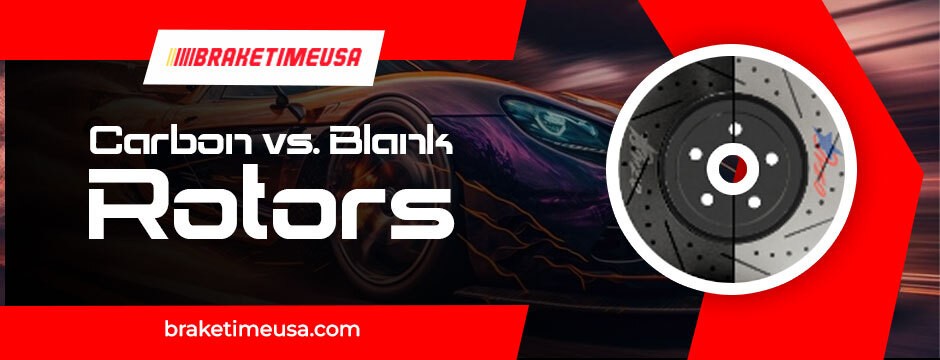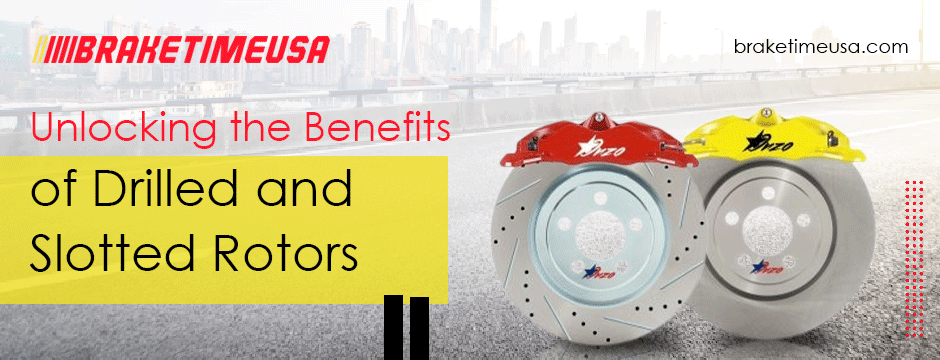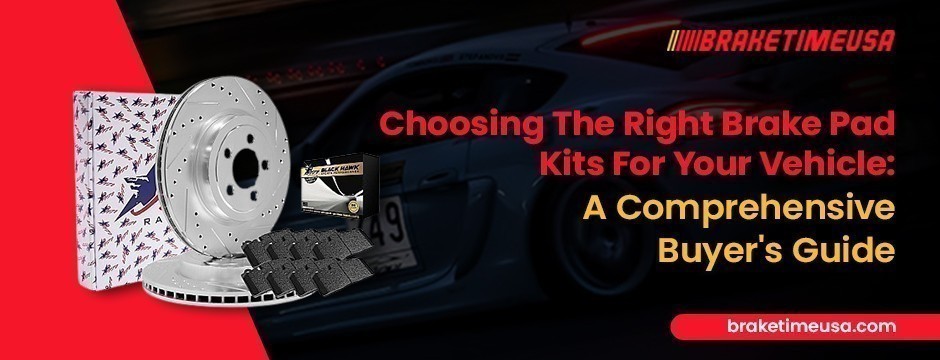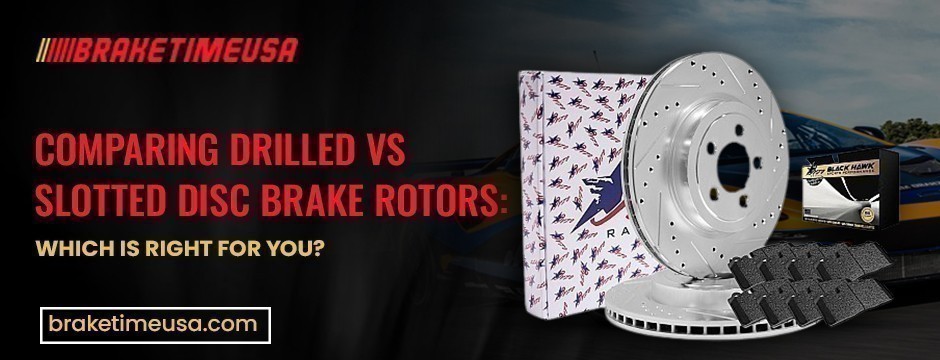Your cart is empty
Subtotal:$0.00
When it comes to brake rotors, the choices can be overwhelming. Most people are familiar with brake pads, but the rotors are just as vital for your vehicle's stopping power. While exploring the world of brake rotors, you might come across terms like G11H18 High Carbon Metallurgy and G3000 Blank Rotors Standards. What do these terms mean, and how do they impact your vehicle's braking performance? Let's dive into the world of carbon vs. blank rotors to understand the key differences and make an informed decision.
Brake rotors, also known as brake discs, are essential components of your vehicle's braking system. When you apply the brakes, the brake pads clamp onto the rotors, creating friction that slows down or stops the wheels from turning. This process converts kinetic energy into heat energy, which the rotors dissipate to prevent overheating. Properly functioning brake rotors are crucial for safe and efficient braking.
1. Cost-Effective:
G3000 rotors are a budget-friendly option. Their affordability makes them widely used across various vehicles, especially for routine replacements. This cost-effectiveness is particularly appealing for drivers looking for economical solutions.
2. Adequate Performance:
Geared towards everyday driving scenarios, G3000 blank rotors provide satisfactory performance. They are a reliable choice for standard commuter vehicles, offering consistent and acceptable braking capabilities for routine usage.
3. Durability:
Recognized for their durability, G3000 rotors exhibit resistance to wear and tear under normal driving conditions. This durability is a crucial factor contributing to their popularity, as it translates to an extended lifespan and reduced maintenance requirements.
4. Limitations:
G3000 blank rotors may face limitations when subjected to more demanding conditions, such as high-performance driving or situations requiring frequent, aggressive braking. In such cases, drivers may experience a reduction in performance.
1. Enhanced Performance:
G11H18 rotors are engineered for superior braking performance, especially in high-stress situations. This makes them an optimal choice for performance-oriented or sports cars where precise and powerful braking is essential.
2. Reduced Brake Fade:
Brake fade, a common concern with heavy or repeated braking, is minimized with G11H18 rotors. This reduction ensures that the braking system maintains its efficiency over prolonged or intense usage, providing consistent stopping power.
3. Noise Reduction:
The high carbon content in G11H18 rotors contributes to noise reduction during braking. This is particularly beneficial for drivers seeking a quieter and more comfortable driving experience, especially in urban environments or during extended drives.
4. Resistance to Cracking:
G11H18 rotors boast improved resistance to cracking and warping. This is a critical feature that enhances their overall longevity and minimizes the need for frequent replacements. The resistance to cracking ensures reliability under various driving conditions.
When deciding to choose between G11H18 vs G3000, it's essential to consider your specific driving needs. Here are some guidelines to help you make the right choice:
Choose G3000 Blank Rotors If:
1. Daily Commuting:
G3000 blank rotors are an ideal choice if your vehicle is primarily used for standard daily commuting. They provide satisfactory braking performance for routine driving situations, making them well-suited for everyday use.
2. Cost-Effectiveness:
If keeping costs in check is a primary concern, G3000 rotors offer the best budget-friendly rotor option. This makes them a popular choice for drivers who prioritize affordability without compromising on basic braking functionality.
3. Non-Performance-Oriented Needs:
If your braking needs are not performance-oriented and you are seeking a reliable and economical solution, G3000 blank rotors are a suitable match. They cater well to standard driving scenarios without the need for high-performance capabilities.
Choose G11H18 High Carbon Metallurgy Rotors If:
1. High-Performance or Sports Car:
G11H18 rotors are the preferred choice for drivers of high-performance or sports cars. These rotors are designed to meet the demands of powerful and performance-oriented vehicles, providing superior braking capabilities in such contexts.
2. Enhanced Braking Performance:
If you prioritize enhanced braking performance, especially in high-stress situations, G11H18 rotors are well-suited for your needs. They deliver improved stopping power, making them ideal for drivers who demand top-tier performance from their braking system.
3. Quieter and Smoother Braking:
G11H18 rotors contribute to a quieter and smoother braking experience. If you prefer a more refined and comfortable driving environment with reduced braking noise, these rotors align with such preferences.
4. Longevity and Resistance to Wear and Tear:
For drivers who value longevity and seek rotors with enhanced resistance to wear and tear, G11H18 rotors are a favorable choice. Their durability ensures a longer lifespan, making them suitable for those who want to minimize the frequency of rotor replacements.
Now that we have a basic understanding of G3000 and G11H18 brake rotors, let's dive deeper into the specifics to help you make an informed choice for your vehicle.
1. Metallurgy:
G3000 Blank Rotors:
G3000 rotors are meticulously crafted from gray cast iron, showcasing a primarily ferritic microstructure. The simplicity of their composition is evident, as they do not incorporate significant alloying elements. This straightforward metallurgical design contributes to their cost-effectiveness, establishing them as a practical choice for standard applications where a reliable and economical braking solution is paramount.
G11H18 High Carbon Metallurgy:
In contrast, G11H18 rotors boast a sophisticated construction, being forged from a high carbon cast iron alloy. The inclusion of a higher carbon content and strategic alloying elements elevates their overall performance. The advanced metallurgy in G11H18 rotors ensures an enhanced braking experience, making them a premium choice for drivers seeking superior stopping power.
2. Performance:
G3000 Blank Rotors:
G3000 rotors, designed for typical driving conditions, provide satisfactory braking performance. They represent a cost-effective solution for vehicles with standard braking requirements, making them ideal for everyday commuting where reliable and economical performance is key.
G11H18 High Carbon Metallurgy:
In the realm of high-stress situations and sports cars, G11H18 rotors shine with superior braking performance. Engineered for enhanced stopping power, they cater to discerning drivers who prioritize performance-oriented driving experiences, making them a preferred choice for those seeking an exhilarating and responsive ride.
3. Brake Fade Resistance:
G3000 Blank Rotors:
While G3000 rotors exhibit durability, they may encounter brake fade under extreme conditions. Brake fade, occurring during prolonged or aggressive braking, can result in diminished stopping power. It's crucial to consider these limitations, especially in situations demanding consistent and robust braking capabilities.
G11H18 High Carbon Metallurgy:
G11H18 rotors, on the other hand, showcase a notable resistance to brake fade. Even under high-stress conditions, they maintain a consistent stopping power profile. This characteristic makes them an optimal choice for performance vehicles where brake fade resilience is paramount for a reliable and secure driving experience.
4. Noise Levels:
G3000 Blank Rotors:
The metallurgical composition of G3000 rotors may lead to increased noise production during braking. Users can anticipate standard levels of braking noise associated with these rotors, highlighting the importance of considering noise levels in the overall driving experience.
G11H18 High Carbon Metallurgy:
G11H18 rotors, featuring a high carbon content, contribute to quieter braking experiences. The reduced noise levels enhance the overall driving comfort, providing users with a more serene and enjoyable ride, particularly in situations where noise reduction is valued.
5. Durability:
G3000 Blank Rotors:
G3000 rotors boast durability and resistance to wear and tear under typical driving conditions. With a reasonable lifespan, they serve as dependable components suitable for regular use in standard vehicles, meeting the longevity expectations of everyday commuting.
G11H18 High Carbon Metallurgy:
Engineered for longevity, G11H18 rotors go a step further with enhanced resistance to cracking and warping. This heightened durability makes them an excellent choice for high-performance applications where a prolonged lifespan is a crucial factor in maintaining optimal braking performance.
When it comes to your vehicle's braking system, the choice of rotors is a critical decision. Two popular options in the market are G3000 and G11H18 rotors, each tailored for distinct driving conditions and preferences. To help you make an informed decision, let's delve into the factors that should influence your rotor choice.
1. Vehicle Type:
G3000 Rotors: These rotors are well-suited for standard commuter vehicles commonly used for everyday transportation. If your vehicle serves as your reliable companion for regular commuting, the G3000 rotors will meet your braking needs efficiently.
G11H18 Rotors: Designed with high-performance, sports, and performance-oriented vehicles in mind, the G11H18 rotors are the go-to choice for those seeking enhanced braking performance. If you own a sports car or a high-performance vehicle, these rotors are the ideal match for your driving needs.
2. Driving Conditions:
G3000 Rotors: If your daily driving routine predominantly includes typical, everyday conditions, the G3000 rotors offer reliable performance. They are engineered to deliver consistent braking power for standard driving scenarios.
G11H18 Rotors: For drivers who frequently encounter high-stress conditions, aggressive braking situations, or even track use, the G11H18 rotors come into their own. Their construction and materials are optimized to withstand the extreme demands of challenging driving conditions.
3. Brake Performance:
When considering your rotor choice, it's crucial to evaluate your specific braking requirements:
G11H18 Rotors: If your driving style demands superior stopping power, the G11H18 rotors are the right option. Their advanced design and composition ensure exceptional braking performance, making them a perfect match for high-performance vehicles and drivers who prioritize safety and responsiveness.
G3000 Rotors: These rotors provide adequate braking performance for standard driving scenarios. If your requirements are primarily focused on reliable braking without the need for exceptional stopping power, the G3000 rotors are a dependable choice.
4. Noise Preference:
Your driving experience includes more than just performance – comfort and noise levels matter too:
G11H18 Rotors: If a quieter and more comfortable ride is a priority for you, the G11H18 rotors are the preferred selection. They are designed to minimize braking noise and vibration, ensuring a smoother and quieter journey.
G3000 Rotors: While G3000 rotors provide effective braking performance, they fall within the standard range of braking noise. If you find the typical brake noise acceptable, these rotors offer a cost-effective and reliable solution.
5. Longevity:
Considering the lifespan of your rotors is essential in your decision-making process:
G11H18 Rotors: Engineered for durability and resistance to wear, G11H18 rotors are your choice for prolonged rotor life. This makes them a worthwhile investment for those who drive high-performance vehicles or encounter demanding driving conditions.
G3000 Rotors: In regular driving conditions, G3000 rotors offer a reasonable lifespan. They are suitable for everyday use, making them a cost-effective option for standard commuter vehicles.
The choice between G3000 and G11H18 rotors ultimately depends on your specific driving conditions, vehicle type, performance preferences, and priorities. Assessing these factors will lead you to the ideal rotor selection that aligns perfectly with your needs, ensuring both safety and performance on the road.
Installation and Maintenance
Whether you choose G3000 or G11H18 brake rotors, proper installation and maintenance are essential. Be sure to follow manufacturer recommendations and consult with a professional mechanic if needed. Regular brake system maintenance is critical to ensure safety and optimal performance.
With the increasing trend of high carbon rotors becoming the standard in original equipment (OE) installations for new cars, a significant shift is underway in the automotive braking industry. The prevalence of high carbon rotors in modern vehicle manufacturing implies that new cars, by default, will be equipped with these advanced braking components. This shift is not limited to new vehicles alone; it indicates a broader industry evolution. As older cars undergo replacements and upgrades, the natural progression suggests a gradual transition towards high carbon rotors for the entire automotive fleet.
This slow but steady interchange signifies a transformative period, where G3000 rotors are gradually phased out in favor of high carbon alternatives. As the market adapts to this changing landscape, a foreseeable future emerges where G3000 orders diminish, giving way to the widespread adoption of high carbon rotors as the new standard in braking technology. This evolution underscores the industry's commitment to enhancing braking performance and aligning with the advancements brought about by high carbon metallurgy.
The choice between G3000 blank rotors and G11H18 high carbon metallurgy rotors boils down to your specific driving needs and preferences. G3000 rotors are cost-effective and suitable for standard vehicles, while G11H18 rotors are engineered for high-performance and sports cars, offering enhanced braking performance and durability.
Understanding the distinctions between these two rotor types will help you make an informed decision, ensuring the safety and efficiency of your vehicle's braking system. When in doubt, consult with your vehicle manufacturer or a professional mechanic to determine the best brake rotor choice for your specific needs. Brake safety is paramount, and choosing the right carbon vs. blank rotors is a significant step toward safer driving.
 Mar 27, 2024Unlocking the Benefits of Drilled and Slotted Rotors
Mar 27, 2024Unlocking the Benefits of Drilled and Slotted Rotors Mar 22, 2024Choosing The Right Brake Pad Kits For Your Vehicle: A Comprehensive Buyer's Guide
Mar 22, 2024Choosing The Right Brake Pad Kits For Your Vehicle: A Comprehensive Buyer's Guide Mar 18, 2024Exploring Different Types of Rear Brake Rotors
Mar 18, 2024Exploring Different Types of Rear Brake Rotors Mar 6, 2024Comparing Drilled vs. Slotted Disc Brake Rotors: Which Is Right for You?
Mar 6, 2024Comparing Drilled vs. Slotted Disc Brake Rotors: Which Is Right for You?
 Feb 5, 2024Comprehensive Guide on How To Check Brake Pads and Rotors for Optimal Maintenance
Feb 5, 2024Comprehensive Guide on How To Check Brake Pads and Rotors for Optimal Maintenance© 2023 - 2024 Braketimeusa. All rights reserved.
